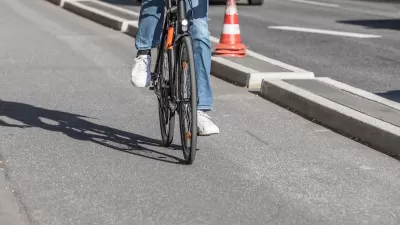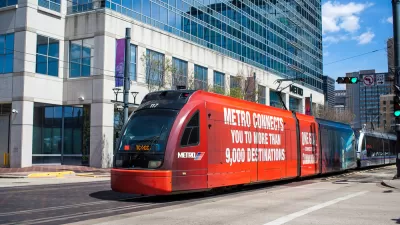The city’s newly approved Strategic Mobility Plan highlights the need for better options when it comes to walking, biking, and public transit, setting a goal to reduce driving to half of total trips.

Charlotte, North Carolina’s city council has approved a Strategic Mobility Plan that seeks to improve public transit options, reduce driving, eliminate traffic deaths, and increase economic mobility for public transit users. According to an article in Smart Cities Dive by Austyn Gaffney, “That effort follows a 2014 study out of Harvard and the University of California, Berkeley that ranked Charlotte last out of the nation’s 50 largest commuting zones for intergenerational, or economically upward, mobility.”
“[At-large city council member Braxton Winston] said the next step for community input would be identifying and prioritizing individual projects that address the plan’s goals.” Meanwhile, the city needs support at the state level to levy a new tax to support the plan, which does not yet have dedicated funding sources.
Alvaro Villagran, director of federal programs for the Shared-Use Mobility Center, “said the Charlotte program follows a general trend of cities moving away from a highway-oriented or street management perspective on transportation to an integration of shared mobility options like public transit, electric vehicles, cycling and pedestrian use.” The plan includes a goal of shifting to a 50-50 mode share, where half of trips or fewer are taken by single-occupancy vehicle. According to Villagran, “Instead of just disincentivizing cars, he said, communities need to make alternative modes of mobility realistic options for residents.”
FULL STORY: Charlotte mobility plan aims to slash car use, transform access to lower-emission options

Trump Administration Could Effectively End Housing Voucher Program
Federal officials are eyeing major cuts to the Section 8 program that helps millions of low-income households pay rent.

Planetizen Federal Action Tracker
A weekly monitor of how Trump’s orders and actions are impacting planners and planning in America.

Ken Jennings Launches Transit Web Series
The Jeopardy champ wants you to ride public transit.

Rebuilding Smarter: How LA County Is Guiding Fire-Ravaged Communities Toward Resilience
Los Angeles County is leading a coordinated effort to help fire-impacted communities rebuild with resilience by providing recovery resources, promoting fire-wise design, and aligning reconstruction with broader sustainability and climate goals.

When Borders Blur: Regional Collaboration in Action
As regional challenges outgrow city boundaries, “When Borders Blur” explores how cross-jurisdictional collaboration can drive smarter, more resilient urban planning, sharing real-world lessons from thriving partnerships across North America.

Philadelphia Is Expanding its Network of Roundabouts
Roundabouts are widely shown to decrease traffic speed, reduce congestion, and improve efficiency.
Urban Design for Planners 1: Software Tools
This six-course series explores essential urban design concepts using open source software and equips planners with the tools they need to participate fully in the urban design process.
Planning for Universal Design
Learn the tools for implementing Universal Design in planning regulations.
Ada County Highway District
Clanton & Associates, Inc.
Jessamine County Fiscal Court
Institute for Housing and Urban Development Studies (IHS)
City of Grandview
Harvard GSD Executive Education
Toledo-Lucas County Plan Commissions
Salt Lake City
NYU Wagner Graduate School of Public Service





























